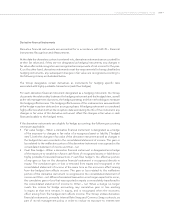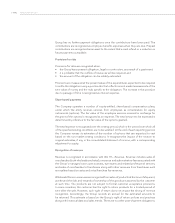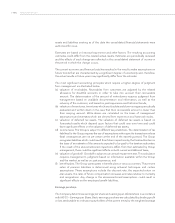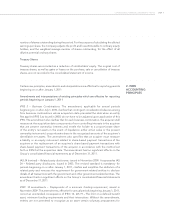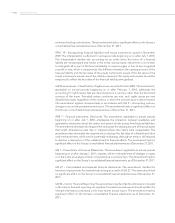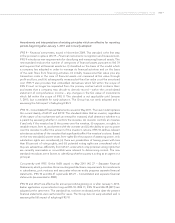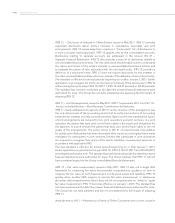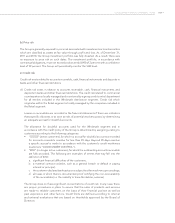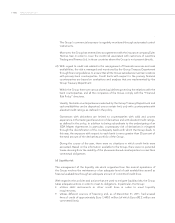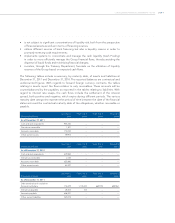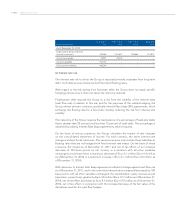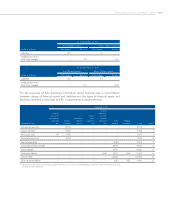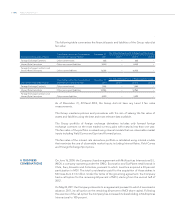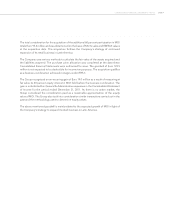LensCrafters 2011 Annual Report Download - page 201
Download and view the complete annual report
Please find page 201 of the 2011 LensCrafters annual report below. You can navigate through the pages in the report by either clicking on the pages listed below, or by using the keyword search tool below to find specific information within the annual report.
| 125 >CONSOLIDATED FINANCIAL STATEMENTS - NOTES
June 2011. The Amendments require separate presentation of items of other comprehensive
income that are reclassified subsequently to profit or loss (recyclable) and those that are
not reclassified to profit or loss (non-recyclable). If items of other comprehensive income
are presented before tax, then income tax is allocated to each respective group. The
amendments do not change the existing option to present an entity’s performance in
two statements; and do not address the content of performance statements (i.e., what
is recognized in profit or loss and what is recognized in other comprehensive income)
or recycling issues (i.e., what can be reclassified (recycled) subsequently to profit or loss
and what cannot). The amendments are effective from July 1, 2012. The standard has not
been endorsed at the date the present financial statements were authorized for issue. The
Group has not early adopted and is assessing the full impact of adopting the amendments
to IAS 1.
Amendments to IAS 19 – Employee benefits, issued in June 2011. The standards make
significant changes to the recognition and measurement of defined benefit pension expense
and termination benefits, and to the disclosures for all employee benefits. Actuarial gains
and losses are renamed “remeasurements” and will be recognized immediately in “other
comprehensive income” (OCI) and will never be recycled to profit and loss in subsequent
periods. Past-service costs will be recognized in the period of a plan amendment; unvested
benefits will no longer be spread over a future-service period. A curtailment now occurs
only when an entity reduces significantly the number of employees. Curtailment gains/
losses are accounted for as past-service costs. Annual expense for a funded benefit plan
will include net interest expense or income, calculated by applying the discount rate to
the net defined benefit asset or liability. There will be less flexibility in income statement
presentation. Benefit cost will be split between (i) the cost of benefits accrued in the current
period (service cost) and benefit changes (past-service cost, settlements and curtailments)
and (ii) finance expense or income. This analysis can appear in the income statement or
in the notes. The standard is effective for annual periods beginning on or after January 1,
2013. Earlier application is permitted. The standard has not been endorsed at the date the
present financial statements were authorized for issue. The Group has not early adopted
and is assessing the full impact of adopting IAS 19.
Amendments to IAS 12 – Recovery of underlying assets, issued in December 2010. The
amendments provide a practical approach for measuring deferred tax liabilities and
deferred tax assets when investment property is measured using the fair value model in
IAS 40 – Investment Property. Under IAS 12, the measurement of deferred tax liabilities
and deferred tax assets depends on whether an entity expects to recover an asset by
using it or by selling it. The standard is effective for annual periods beginning on or after
January1, 2012. Earlier application is permitted. The standard has not been endorsed at
the date the present financial statements were authorized for issue. The new standard will
not have any impact on the Group consolidated financial statements.
IAS 28 – Investments in associates and Joint ventures, issued in May 2011. The standard
supersedes IAS 28 – Investments in associates, as amended in 2003. The standard
incorporates the accounting for joint ventures and certain amendments discussed by the
standard setting board during its deliberations on the exposure draft ED 9. The standard
is effective for annual periods beginning on or after January 1, 2013. Earlier application is
permitted so long as IFRS 10, IFRS 11, IFRS 12 and IAS 27 (2011) are adopted at the same


